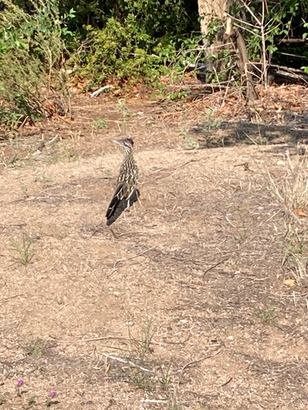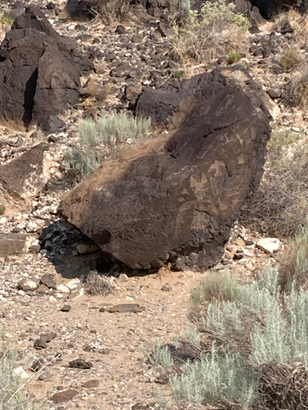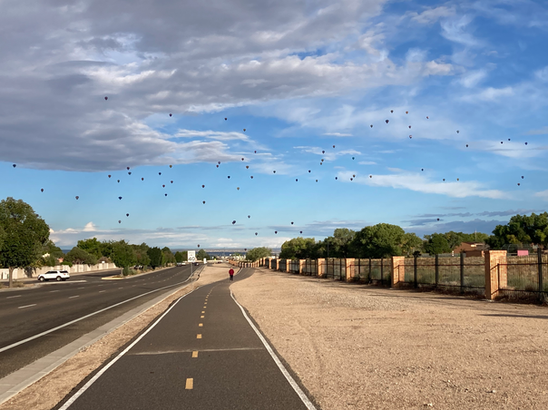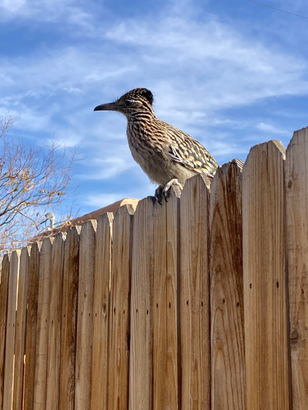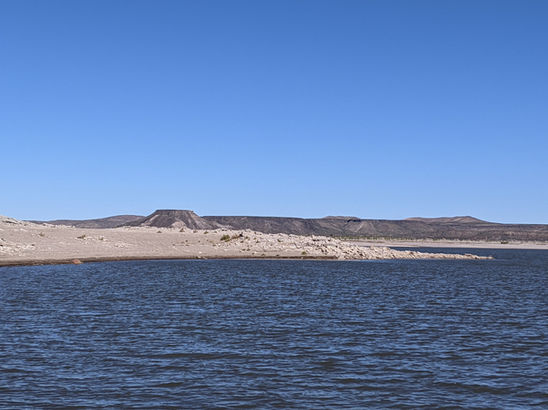
Panda GSA
Prospective Students
UNM is an R1 university, active in many areas in physics, astronomy and optics. If you're interested in applying to UNM as a graduate student, you're welcome and encouraged to reach out to faculty and current graduate students to inquire further!
Grad school application tips:
-
Make sure to have plenty of friends check out your personal statement and other supplemental materials!
-
Talk to grad students the university you're applying to! Ask them about the department, grad life there, and the professors you want to work with. They know it all! (You can contact us here!)
-
Make sure someone at the school you're apply to is doing research that you are interested in! Remember that you can reach out to professors too and ask about what they're doing. Also, this gets your name out there, so win-win!
-
RESEARCH RESEARCH RESEARCH (if you can). Do research as an undergrad to bolster your application (even if it isn't in your intended subfield)! If your university doesn't offer a ton of research opportunities, apply to summer internships/REUs.
-
Look out for opportunities to do outreach - tutor, TA, and mentor other students of physics. Show the application committees that there is more to you that test scores!
-
If you receive an offer, visit before making a commitment. If you can't, make sure you don't skip step 2
Grad life in New Mexico
Our department(s)
Physics at UNM spans two departments, the Physics & Astronomy department (P&A) and the Optical Sciences and Engineering department (OSE). While these two departments are technically separate, their graduate students share classes, TA together, and are included in the Physics and Astronomy Graduate Student Association. Altogether, we currently have 120+ graduate students (which you can find listed here).
The P&A department has been revamped in recent years, with a brand new building and a new Ph.D. path. Our new building, PAIS (Physics, Astronomy and Interdisciplinary Sciences) is located at the south end of campus right off of Central Avenue. Most graduate students work in shared office spaces with individual desks, though some are also employed by and work at the Sandia and Los Alamos National Labs or the Air Force Research Laboratory nearby. During the first semester, all new graduate students attend a seminar in which each professor breaks down the research they do, which includes astronomy, cosmology, particle physics, quantum computing, and more. Graduates students generally begin as teaching assistants for their first two semesters and begin doing research by their first summer at UNM. Our Ph.D. track no longer requires qualifying exams, and you can read up more about our new candidacy exam format, course requirements, and how you can grab your Masters along the way here.
Since the OSE program shares many core courses with P&A, OSE students will likely spend quite a bit of time in PAIS, particularly in their first year. OSE also has close ties to the Center for High Technology Materials (CHTM), located south of the main campus, in UNM’s Science and Technology Park. CHTM houses classrooms, the OSE graduate student office space, and a suite of research facilities. These include an SEM lab, laser labs, crystal growth facilities, and a cleanroom equipped with fabrication facilities such as a photolithography bay and inductively coupled plasma (ICP) etchers. Students typically begin research by the beginning of their second year. Most research is conducted at CHTM, but may also be done principally or partially at other facilities, including the Center for Integrated Nano Technology (CINT), operated jointly by Sandia National Laboratories and Los Alamos National Laboratory. More information about qualifying exams, course requirements, and program concentrations may be found here.
Science in NM
In addition to the many research opportunities available at UNM, Albuquerque is the home of Sandia National Laboratories, one of the country’s premier research laboratories. Sandia Labs, as its commonly known, is a contractor for the U.S. Department of Energy. It employs thousands of scientists, many of which come from UNM graduate programs, including our own departments. Researchers at Sandia Labs contribute to scientific innovations in the fields of energy and national security at Sandia’s cutting edge facilities just a few miles from the UNM campus. Sandia Labs is located within Kirtland Air Force Base, which does its own scientific research through its Air Force Research Laboratory. The AFRL conducts research into aerospace technologies in conjunction with the U.S. Department of Energy National Laboratories and NASA.
Located a few hours north of Albuquerque, Los Alamos National Laboratory operates as a U.S. Department of Energy laboratory much like Sandia Labs. The Los Alamos Laboratory is another major research institution employing countless UNM graduates. Not only known for its scientific research today, the Los Alamos Laboratory has a storied history and played an important role during the crisis of World War II. The Los Alamos Laboratory was established to create the Atom Bomb in 1943 and the first bomb was set off at the Trinity testing site, which is located in White Sands National Park, about 2.5 hours south of ABQ. You can go down there and visit the park and even the testing site on certain days of the year.
New Mexico is also home to some very interesting radio astronomy research, as the Very Large Array, part of the National Radio Astronomy Observatory, is located about two hours SW of campus. This observatory includes 27 antennas and is part of the Very Long Baseline Array, a system of telescopes that spans the country and is centrally operated from the Array Operations Center in Socorro, NM. The Long Wavelength Array is also located nearby, consisting of two stations (at the moment), one located at the VLA campus and the other on the Sevilleta National Wildlife Refuge. The LWA is directed by Dr. Greg Taylor at UNM, so make sure to reach out if you're interested in conducting radio astronomy research with some cutting-edge instruments!
NM in the media
"I KNEW I shoulda made dat left toin at Albakoikie"
-Bugs Bunny
If you're not from the southwest, you might have never even thought about ABQ. We know that some of us fall into that boat! But New Mexico has a pretty healthy presence in the media. You may have heard of the Roswell alien landing, and if you haven't you may have heard of the Roswell alien TV shows. Spoiler alert: there are no extraterrestrials in the department, but we have our suspicions about certain professors . . .
It is also very possible that you have seen New Mexico before. Many film and television production studios have chosen to film out here, and you can sometimes see them around town. Breaking Bad famously filmed in ABQ, but Better Call Saul, Night Shift, Preacher, Contact, The Space Between Us, Thor, and the opening scene of The Avengers are just a few other examples of movies and shows that were filmed in NM. Josh Brolin's new show Outer Range even filmed in our new physics building last summer, so keep an eye out for it!
Food and brews
New Mexican cuisine is a fusion of Native American food and Spanish ingredients created over the past 500 years. If you ask anyone about it, they'll mention one key component: Hatch Chiles. They are everywhere and featured in most traditional New Mexican dishes. Our specialties include Chiles Rellenos, Carne Adovadas, Biscochitos, and especially the Green Chile Cheeseburgers and breakfast burritos. If you go to a restaurant, be prepared to say if you want red or green chiles - or be adventurous and say "Christmas"! You also have to check out Frontier, located right across the street from our building, and a great place to try out our New Mexican favorites.
Albuquerque is also home to a bunch of breweries with its own craft beer culture. The PandA GSA makes a point to have our "meetings" at one every other Friday. The city also has a few great local coffee houses, including Satellite and Humble, which often offer chile hot chocolate - delicious! We also love our Piñon coffee - it is the best!
*If you're not an adventurous eater, don't worry - ABQ is the biggest city in the state, and we have a range of cuisines including most of your comfort foods.
Culture
Albuquerque is a city steeped in centuries of culture; this is seen everywhere from the beloved Pueblo Revival architecture, to the handcrafted goods and authentic foods at the Old Town Market, and even in the ways people talk. The state of New Mexico is home to nineteen pueblos, three Apache tribes, and a significant portion of the Navajo Nation. Please read UNM's land acknowledgement here.
Albuquerque has plenty of fascinating gatherings throughout the year, the most well-known of which is the Albuquerque International Balloon Fiesta, in which hundreds of hot-air balloons dot the early morning skies in October. Those looking to satisfy a bucket list can find plenty of willing balloon operators to give them a unique perspective! Additionally, various other festivals (particularly the Wine Festival and the Chocolate and Coffee festival) are delightful ways to find local coffee, tea, candy, and wine varieties and shops. We also throw a mean Pride month!
Albuquerque also has an impressive art scene, and a strong connection to public science. Whether you're interested in vintage thrifting, modern art, history, culture, science, museums, or just a relaxing afternoon watching balloons go by, Albuquerque has it all!
Housing in ABQ
Students from our department live all over ABQ and the surrounding areas. If you want to find housing through the university, UNM offers apartment-style graduate student housing at the Lobo Rainforest near downtown, as well as the option to live in the on-campus dorms (availability permitting). UNM lists off-campus housing options here. Prices vary across the city, but Albuquerque has one of the lowest cost of living nation wide.
You can also find places to rent through third-party websites like Zillow.com.
We are working on creating a list of housing resources and information about ways to commute to campus and around the city, but if you have any questions before that is developed, please get in touch with us using the form below!
Outdoor and recreation
New Mexico sees more than 300 days of sunshine per year, so the great outdoors are a safe bet any day when you need a break from your studies, with little rain to impede the fun! Whatever you're looking for, there is a range of activities you can enjoy, from an intense hike up the mountain, a chill walk along the river via the Paseo del Bosque trail, or even a chance to enjoy the beautiful botanical gardens.
The City of Albuquerque is home to more than 400 miles of bike paths and trails, including the famous 50 Mile Loop that circumnavigates the entire city. You'll always have a new bike trail to bike or run on! Don’t have a bike? The University of New Mexico has an Outdoor Rental & Resource Center where you can rent the equipment you need from cross-country skies to camping supplies.
For the days when you want to get away, the Sandia mountains provide an incredible variety of hikes and outdoor climbing. They are called the "Sandias", meaning watermelon, because they turn pink at sunset! You can find trails everywhere from the foothills to the Sandia Crest. There are numerous ways to get to the top: you can drive to the crest in your car, take the tram to the Ten 3 restaurant at the peak, or even, if you're ambitious, hike the whole thing. Be safe and explore with a friend, and always tell someone where you're headed! If you want to get even farther away, you can also check out the numerous national parks located in the Southwest United States; New Mexico is home to Carlsbad Caverns and White Sands. Grab your camping gear and make a weekend of it!
Winter sports can be enjoyed here on the Sandia slopes, as well as further north in Santa Fe and Taos. Colorado borders New Mexico just three hours to the north if you exhaust all of these locations, and is home to its own plethora of activities! We also have indoor climbing for the colder months; the Stone Age Climbing Gym has two locations, and for a semesterly student-discounted fee, you have access to both!
Reach out to us if you have any questions, and we look forward to seeing you next semester!




